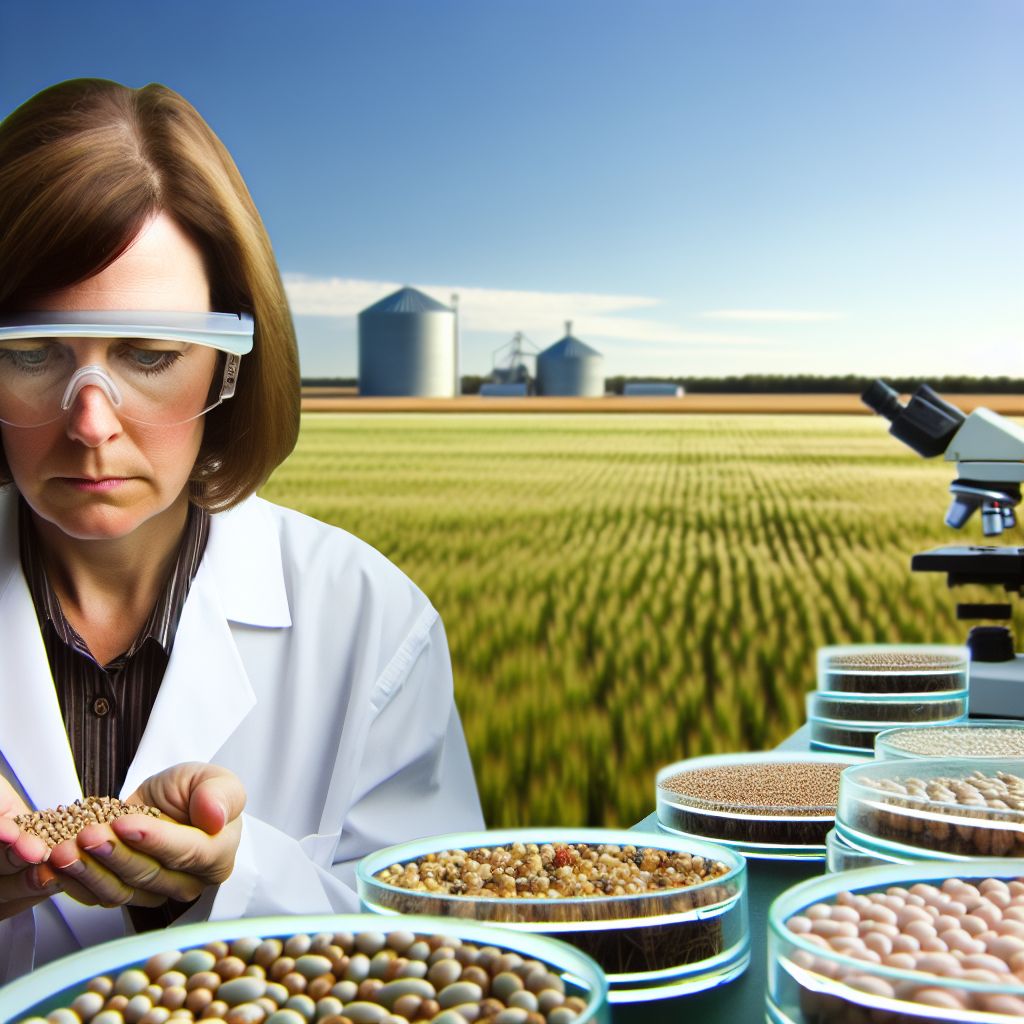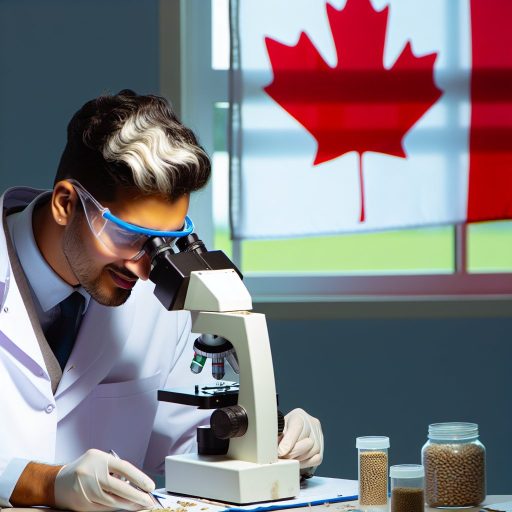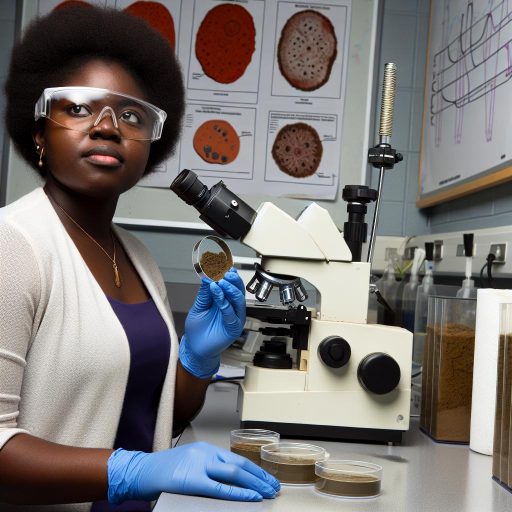Overview of Seed Technology
Definition of Seed Technology
Seed technology involves the methods and practices related to seed production.
It includes seed breeding, processing, and packaging techniques.
Moreover, it focuses on enhancing seed quality and performance.
Seed technology plays a vital role in sustainable agriculture.
It helps in developing crops that require fewer resources.
Importance of Seed Technology in Agriculture
Seed technology directly impacts crop yields and food security.
High-quality seeds lead to better plant growth and productivity.
Additionally, improved seeds can resist pests and diseases.
This reduces dependency on chemical pesticides.
Consequently, it promotes environmental health and biodiversity.
Current Innovations in Seed Technology
Recent advancements include genetically modified organisms (GMOs).
GMOs are engineered for resistance to environmental stresses.
These technologies enhance nutritional values in crops.
Furthermore, new breeding techniques like CRISPR are emerging.
CRISPR offers precise modifications in plant genomes.
The Role of Seed Technology in Sustainable Practices
Seed technology contributes significantly to sustainable farming practices.
It supports the development of drought-resistant crops.
Such crops ensure food production in adverse conditions.
Moreover, seed technology can optimize resource use.
This includes reducing water and fertilizer requirements.
Current Innovations in Seed Development
Genomic Editing Techniques
Genomic editing represents a revolutionary advancement in seed technology.
This technique allows precise modifications to an organism’s DNA.
Scientists use tools like CRISPR for targeted changes.
These changes can enhance crop resilience to diseases.
Additionally, genomic editing can improve drought tolerance.
Unlock Your Career Potential
Visualize a clear path to success with our tailored Career Consulting service. Personalized insights in just 1-3 days.
Get StartedThis innovation directly contributes to sustainable farming practices.
Biotechnology Applications
Biotechnology in seed development opens new avenues for agricultural productivity.
One significant application is the creation of genetically modified organisms (GMOs).
GMOs can exhibit traits such as pest resistance and herbicide tolerance.
These traits reduce the need for chemical interventions.
As a result, biotechnology fosters environmentally friendly farming.
Benefits of Innovative Seed Technologies
Innovative seed technologies provide numerous benefits to farmers.
Higher yield potential is a primary advantage.
Farmers can grow more food on the same amount of land.
Furthermore, these technologies help reduce crop failures.
This ensures a more stable food supply chain.
Challenges and Considerations
Despite the benefits, challenges still exist in seed technology innovation.
User acceptance of GMOs varies across different regions.
Additionally, regulations surrounding biotechnology can be stringent.
Farmers may also face higher initial costs for innovative seeds.
These factors can slow the adoption of new technologies.
Future Trends in Seed Development
The future of seed technology looks promising.
Emerging trends include the use of artificial intelligence for seed selection.
AI can analyze growth patterns and improve crop outcomes.
Moreover, integration with sustainable practices will likely deepen.
These advancements pave the way for a more resilient agricultural landscape.
The Role of Hybrid Seeds in Sustainable Farming Practices
Enhancing Crop Yields
Hybrid seeds significantly boost crop yields compared to traditional varieties.
This increased productivity helps meet the growing food demands globally.
Farmers can produce more food on less land, promoting efficient land use.
Resilience to Climate Change
Hybrid seeds are engineered for greater resilience against climate stresses.
They often exhibit improved drought, pest, and disease resistance.
As a result, farmers can sustain their harvests despite adverse conditions.
Resource Efficiency
Utilizing hybrid seeds can lead to better resource efficiency in farming.
This includes reduced water usage and lower fertilizer requirements.
Such practices contribute to environmental sustainability and conservation efforts.
Supporting Biodiversity
Hybrid seed production encourages genetic diversity in crop varieties.
By mixing different genetic traits, farmers can enhance ecological balance.
Biodiverse farms support various organisms, enriching the farming ecosystem.
Socioeconomic Benefits
Farmers using hybrid seeds often see improved economic outcomes.
Higher crop yields lead to increased profitability and reduced poverty levels.
Moreover, it fosters community resilience by ensuring food security.
Gain More Insights: Challenges in Implementing Sustainable Farming Solutions
Impact of Precision Agriculture on Seed Technology and Crop Yield
Advancements in Seed Technology
Precision agriculture stimulates innovation in seed technology.
The development of genetically modified seeds enhances crop resilience.
Farmers can solve challenges such as pests and climate change with these seeds.
Moreover, hybrid seeds are gaining popularity for their high yields.
These advancements ultimately promote sustainable farming practices.
Data-Driven Decision Making
Data analytics play a crucial role in modern farming.
Farmers leverage data to determine the best seed varieties for their fields.
This data includes soil health, weather patterns, and historical yields.
By relying on data, farmers minimize risks associated with farming.
Consequently, crop yields see significant improvements over time.
Efficiency in Farming Practices
Precision agriculture enhances the efficiency of farming practices.
This efficiency begins with planting the right seed at the right time.
Fully optimized planting ensures individual seed needs are met.
As a result, resource use becomes more sustainable and effective.
Farmers can apply fertilizers and water precisely where needed.
Enhanced Monitoring and Management
Technological innovations allow for improved field monitoring.
Farmers utilize drones and satellite imagery for real-time assessments.
This proactive approach enables timely interventions based on conditions.
Responsive management helps maintain optimal growing conditions.
Ultimately, this leads to increased crop yields and sustainability.
Impact on Economic Viability
Investments in precision agriculture enhance the economic viability of farms.
Higher crop yields translate to increased revenue for farmers.
Moreover, reduced input costs lead to better profit margins.
Farmers can reinvest savings into further innovations.
Thus, sustainable farming practices become economically sustainable.
Gain More Insights: Key Skills Needed to Excel as a Seed Technologist
Sustainability through Seed Diversity: Heirloom and Native Seed Varieties
The Importance of Seed Diversity
Seed diversity plays a crucial role in sustainable farming practices.
It enhances resilience against pests and diseases.
Additionally, diverse seeds can adapt better to climate changes.
Farmers benefit from a wider variety of crops through this diversity.
Heirloom Seeds
Heirloom seeds are open-pollinated and have been passed down through generations.
They often produce unique flavors and qualities not found in modern hybrids.
Growing heirloom varieties helps preserve genetic diversity.
Furthermore, they can contribute to local agricultural heritage.
Native Seed Varieties
Native seeds are adapted to local conditions and ecosystems.
Using native varieties supports local biodiversity and wildlife habitats.
These seeds typically require fewer inputs, promoting lower resource use.
Farmers can cultivate healthier soil and crops through native plants.
Challenges and Considerations
Despite their benefits, heirloom and native seeds face some challenges.
One issue is the limited availability in commercial markets.
Additionally, some farmers may lack knowledge about these varieties.
Education and awareness can help overcome these barriers.
Support for Seed Diversity
Community seed banks can promote the preservation of heirloom and native seeds.
Organizations like Seed Savers Exchange encourage seed sharing among farmers.
Local gardening groups often host workshops on seed saving techniques.
Moreover, government policies can incentivize the use of diverse seed varieties.
Find Out More: The Science Behind Tree Pruning and Arborist Expertise

Technological Advances in Seed Coating and Treatments for Enhanced Growth
Introduction to Seed Coating Technologies
Seed coating technologies have rapidly advanced in recent years.
These innovations enhance seed performance and plant emergence.
Moreover, they improve resistance to diseases and pests.
Types of Seed Coatings
Various types of seed coatings exist today.
Each type serves specific purposes in agricultural practices.
- Fungicidal Coatings: These protect seeds from fungal pathogens.
- Pesticidal Coatings: These deter insect infestations during germination.
- Nutrient Enriched Coatings: These provide essential nutrients for initial growth.
- Biostimulant Coatings: These enhance natural growth processes and improve stress resilience.
Benefits of Seed Treatments
Seed treatments offer numerous advantages to farmers.
They improve germination rates, leading to better crop yields.
Additionally, treated seeds establish stronger root systems.
Furthermore, they require less water during the early growth phase.
Innovative Coating Materials
Recent research has led to the use of advanced materials in seed coatings.
Biodegradable polymers have become popular options.
These materials reduce environmental impact while maintaining effectiveness.
Conversely, nano-coatings provide targeted delivery of nutrients.
Future Directions
The future of seed coating technology looks promising.
Researchers are exploring smart coatings that respond to environmental stimuli.
Such innovations could optimize growth conditions dynamically.
Additionally, integrating gene editing techniques may enhance seed resilience further.
Successful Case Studies
Several companies have demonstrated success with innovative seed coatings.
Agritech Innovations, for instance, developed a biostimulant coating that significantly boosts yield.
Similarly, FarmTech Solutions reported great results with their pesticide-infused coatings.
These case studies highlight the potential of seed technology advancements.
Learn More: How Arborists Maintain Healthy Trees and Ecosystems
The Future of Seed Technology: Plant Breeding Innovations and Climate Resilience
Advancements in Plant Breeding Techniques
New plant breeding techniques are revolutionizing agriculture.
These innovations enhance seed performance under various conditions.
For instance, CRISPR technology allows precise gene editing.
This method boosts crop yields while minimizing environmental impacts.
Additionally, methods like marker-assisted selection speed up breeding processes.
Farmers can now access varieties tailored for specific climates.
Such advancements secure food production amid changing weather patterns.
Enhancing Climate Resilience
Climate resilience in crops is increasingly crucial.
Breeding crops that withstand drought, flooding, and pests boosts sustainability.
For example, resilient wheat varieties show improved yield stability.
These crops require less water and fertilizers, benefiting both the environment and farmers.
Moreover, climate-resilient crops contribute to soil health.
Healthy soils can better absorb water and nutrients.
This relationship enhances overall agricultural productivity.
Collaborative Research and Development
Collaboration between scientists and agricultural organizations drives innovation.
Institutes like the International Rice Research Institute push boundaries in breeding.
Public-private partnerships enhance research funding and expertise.
Such collaborations result in faster development of new varieties.
Furthermore, they ensure that innovations align with farmer needs.
Research data and local farmer knowledge create a balanced approach.
This synergy augments the effectiveness of seed technology advancements.
Beyond Conventional Breeding
Biotechnology is not the only player in seed innovation.
Traditional breeding methods also see enhancements through technology.
Digital tools improve data collection and analysis in breeding programs.
Farmers can strategically select traits that enhance their crops.
Ultimately, this leads to better harvests despite unpredictable conditions.
Additionally, regenerative agriculture practices complement these innovations.
These practices focus on building soil health and improving biodiversity.
Future Perspectives and Emerging Trends
Looking ahead, seed technology will continue to evolve.
Emphasis on genetic diversity will mitigate risks associated with monoculture.
Genotyping and phenotyping technologies will advance rapidly.
These tools will help predict crop performance with higher accuracy.
Furthermore, consumer demand for sustainable practices drives these changes.
As awareness grows, so does the market for innovative seed solutions.
This trend will likely shape the future of food production globally.
Regulatory Challenges and Opportunities in Seed Technology for Sustainable Agriculture
Understanding Regulatory Frameworks
Regulatory frameworks govern seed technology across the globe.
These frameworks are crucial for ensuring safety and efficacy.
Moreover, they vary significantly between regions and countries.
For instance, the European Union has stringent regulations.
In contrast, the U.S. regulatory environment is comparatively more flexible.
Navigating these regulations poses challenges for innovators.
Challenges Facing Innovators
Innovators in seed technology often face significant regulatory hurdles.
For example, lengthy approval processes can delay product launches.
Additionally, inconsistent regulations across regions complicate global marketing efforts.
Furthermore, public perception influences regulatory decisions.
Negative public sentiment may lead to stricter regulations.
Consequently, innovators must engage in proactive communication strategies.
Opportunities for Growth
Despite these challenges, regulatory frameworks offer opportunities as well.
For example, regulations can spur trust among consumers.
This trust can lead to increased market acceptance of innovative seed technologies.
Moreover, comprehensive regulations can foster collaboration between stakeholders.
Industry partnerships often emerge to navigate complex regulatory landscapes.
This collaboration can ultimately enhance innovation and productivity.
Strategies for Navigating Regulations
Successful navigation of regulations requires strategic planning.
Staying informed about regulatory changes is essential for innovators.
Establishing relationships with regulatory bodies can facilitate smoother processes.
Additionally, investing in sustainable practices can strengthen compliance.
Moreover, transparency in business practices fosters goodwill with regulators.
The Role of Technology in Compliance
Technological advancements play a pivotal role in meeting regulatory requirements.
For example, digital platforms can streamline documentation processes.
Furthermore, data analytics can aid in risk assessment and reporting.
Innovative technologies help ensure product safety and compliance.
As a result, these tools can enhance the overall efficiency of seed technology firms.
Future Directions in Regulation
The future of seed technology regulation is evolving rapidly.
Incorporating feedback from stakeholders could lead to more balanced regulations.
Moreover, adaptive regulations can enhance innovation while ensuring safety.
Ultimately, a collaborative approach could benefit both regulators and innovators.
This partnership can lead to sustainable advancements in agriculture.
Additional Resources
The future of food and agriculture: Trends and challenges
Adoption of agricultural technology in the developing world: A meta …




